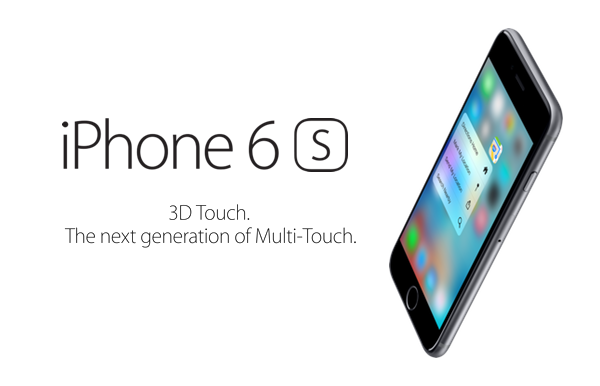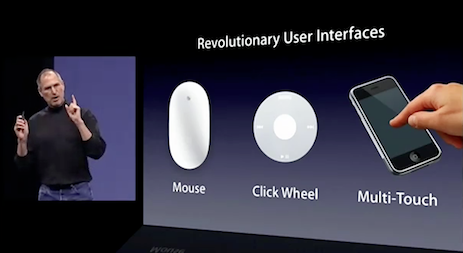You’d be forgiven for being more than a little confused about Apple’s introduction of 3D Touch with the iPhone 6s and iPhone 6s Plus. Granted, 3D Touch is probably the most noteworthy take home feature of the new iPhone, but for the layman out there it’s sure to cause more than a few moments of confusion. 3D Touch? Force Touch? Multi-Touch? Surely they are all essentially the same thing, right? Well, they all derive from the same methodologies of interaction, but offer very different results and abilities.


Multi-Touch:
Let’s start at the beginning, with multi-Touch. Apple introduced multi-Touch to the smartphone world with the original iPhone dating way back in 2007. Multi-Touch essentially provides users with a gestures based way of interacting with the content shown on the display of the device; tapping, swiping, and pinching in and out. All of these extremely familiar ways of interacting with and manipulating content were introduced with the original iPhone and have become the accepted way of using a modern smartphone or tablet.


Force Touch
So, what about this Force Touch that’s found in the Apple Watch and certain MacBook trackpads? Well, Force Touch is a slight evolution of multi-Touch, bringing with it the ability to detect the amount of pressure that has been applied to a particular area of the display. The underlying OS is then programmed to respond accordingly to the level of pressure detected. The installed firmware, whether it be iOS, OS X, or watchOS, reacts to that pressure by presenting things like contextual menus or performing a single call-to-action. In short, it is sensitive enough to tell a difference between a tap and a press.
3D Touch:
And now 3D Touch, what’s that all about? To quote Apple’s Chief Designer Jony Ive, 3D Touch is the “next-generation of Multi-Touch”. Rather than being a small evolutionary step, 3D Touch adds a whole new dimension to already familiar gestures and methods of interaction. 3D Touch is impressive due to its ability to differentiate between exerted pressures of varying degrees. As an example, a light press on an app icon may provide a simple contextual menu with frequently used actions, this is called Peek. Whereas a harder press may invoke Pop functionality. So basically with 3D Touch, the display can sense three different types of pressure: the usual tap, light press (Peek) and hard press (Pop). Here it is in action:
Both Force Touch and 3D Touch are based on exactly the same technology that utilizes Apple’s own proprietary Taptic Engine. It’s extremely easy to confuse the two technologies, but in its simplest terms it’s easy to imagine 3D Touch as an enhanced version of the Force Touch capabilities found in the Apple Watch. Multi-Touch is capable of taps, swipes and pinches. Force Touch is capable of understanding and acting on detected taps, swipes, and pinches as well as soft press. 3D Touch however, does it all, and with the additional ability to provide additional context upon harder presses on the screen.
You may also like to check out:
You can follow us on Twitter, add us to your circle on Google+ or like our Facebook page to keep yourself updated on all the latest from Microsoft, Google, Apple and the Web.
